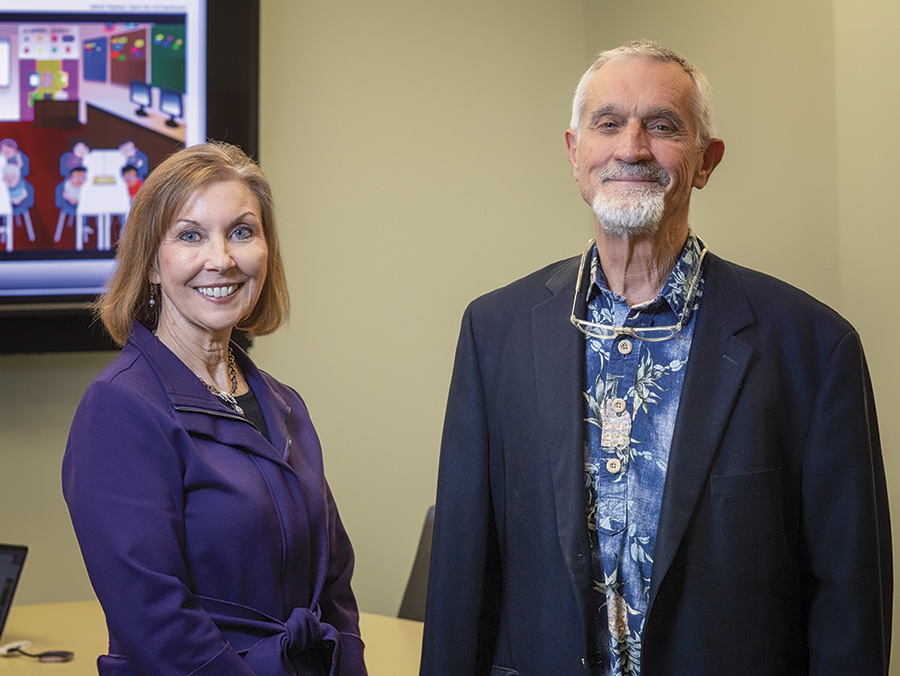
Before Rhonda Christensen entered the classroom as a first-year teacher, she thought she was well-prepared for the rigors of the role. As an education major, she had taken all the required courses and completed her pre-service hours, assisting seasoned instructors with curriculum and classroom management.
But once captain of her own classroom ship, Christensen realized there were challenges she had never been forced to confront: students with Individualized Education Programs and 504 plans. Language and learning barriers. A mix of socioeconomic and demographic backgrounds that required a deft -- and equitable -- approach to instruction and interaction.
"I know how hard it is to get support when you're a classroom teacher," says Christensen, now a research professor of learning technologies and director of UNT's Institute for the Integration of Technology into Teaching and Learning.
Inspired by those early experiences, Christensen and Gerald Knezek, Regents Professor of learning technologies, (pictured) recently applied for and received an $840,000 grant from the National Science Foundation to use artificial intelligence to increase teacher efficacy and equity and diversity in K-12 classrooms.
In the project, Christensen and Knezek will use simSchool -- a simulation program focused on enhancing K-12 professional development classroom experiences -- to analyze teachers' interactions with students. The simSchool modules are designed to help teachers become more effective instructors by preparing them for challenges inherent in the classroom environment as well as identify implicit biases they may have.
The project will roll out over the next three years with teachers in California-based Aspire Public School. Teachers will engage with each module a minimum of five times, with the modules providing an equity index that illuminates any implicit biases or areas for growth. Once participants complete the modules, Christensen and Knezek will analyze trends within the data.
"The more practice you can have with kids who you may not interact with in real-life teacher preparation programs, the better," Christensen says. "Kids are very different, and you need different strategies for different kids."